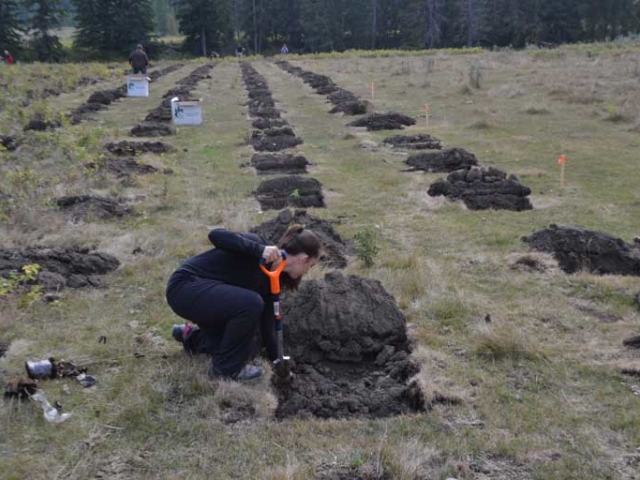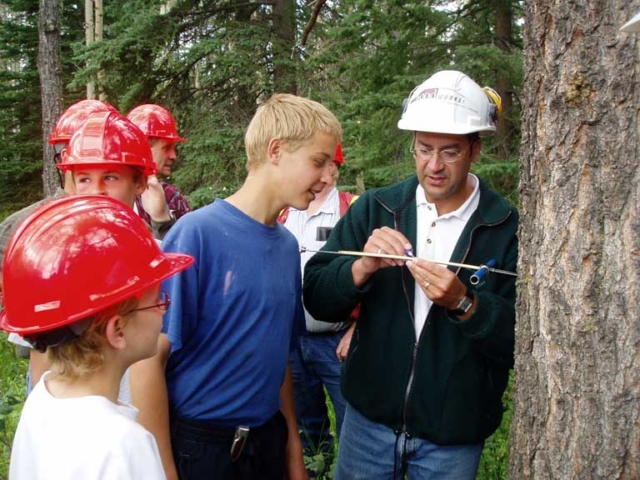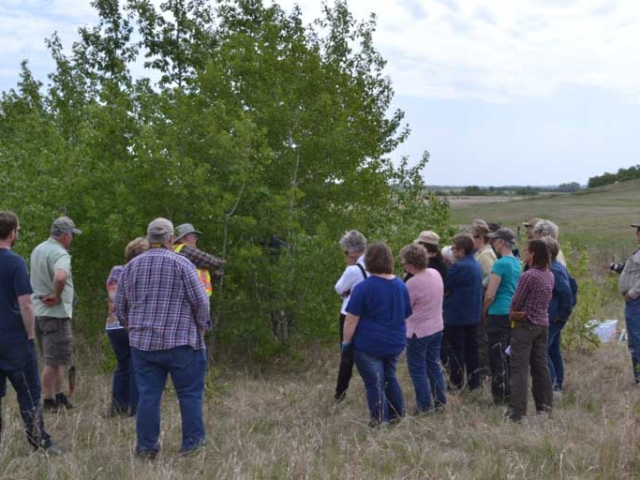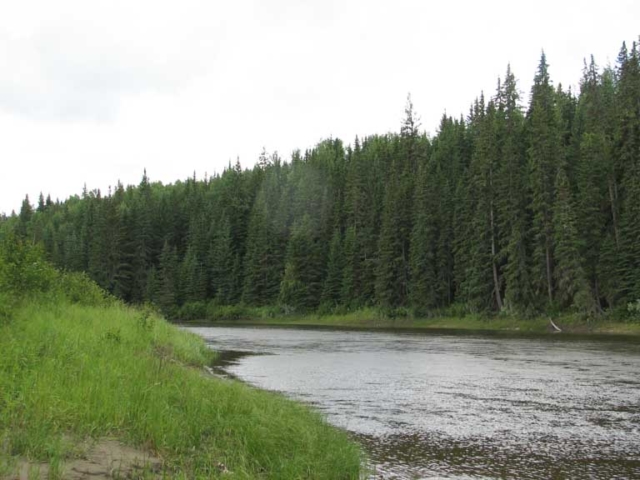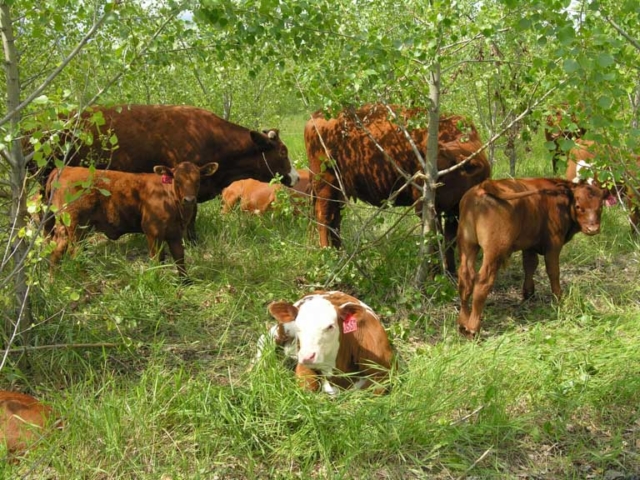One Of The Great Bioindicators: The Dragonfly
Author: Maria Votsis
Nothing beats rowing in a canoe and hearing the slight buzzing of dragonflies in the distance catching mosquitoes. The best ally against biting predators are not only beautiful to watch, but clever to observe because of their swift approach towards prey mid-flight. The province of Alberta is made up of 21% wetlands, a perfect ecosystem where dragonflies thrive and can be found in. Urban sprawl has decreased the amount of wetland coverage in Alberta and conservation efforts will be needed to improve the state of this ecosystem. Dragonflies are inspiring and often welcomed around people due to their ability to decrease mosquito populations.
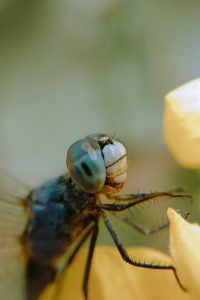
Close up image of a dragonfly eye. With a 95% catch rate of prey, dragonflies have an aim to compete for.
Before there were planes, only creatures of the earth roamed the air freely with their natural wings. Humans have been inspired for years by bugs and birds. However, over time many species have come and gone due to extinction. Dragonflies in particular stand out as masters of flight and aim. The mystic appeal of dragonflies has been around the earth for over 300 million years. In this time dragonflies have been able to develop their ability to fly and be strong predators. The flying capabilities of a dragonfly have shown to catch 95% of prey released inside an enclosure during a Harvard University research study. With a percentage as high as that, I am sure the researchers had not only a report to describe but a whole entertaining show!
Dragonflies are sharp predators and needed in our wetlands as a main part of the food chain. Their anatomy has changed since the early ages of our time seeing them on earth. A fossil has been found of wingspans up to two feet, the size of some birds now! The large size of many animals during this time is theorized to be influenced by the high levels of oxygen found during that period. Being one of the first insects to evolve, their wings and bodies have changed since to fit the changing climate. Being ahead of the game may have increased their evolution but there’s no guarantee they will be able to survive the next 300 million years.
The timeline of all species on earth varies depending on evolution. Not all species are able to evolve in a way that survives until today, which makes the ones that do so much more fascinating. The easiest way to ensure that species are able to survive each year is the ability for their habitat to stay intact. It is vital for all living organisms to thrive in a clean environment and some species are considered by scientists to be bioindicators. Bioindicators are when a living organism such as plants, animals, plankton, and microbes are used as a sign of good environmental health. Dragonflies are a part of this group of bioindicators, meaning that when you see one or many, the local area around is clean. It is always a good sign to be able to see them thrive.
To help increase their life, let’s look at their lifespan. Dragonfly eggs are laid underwater among plants or in silt, which are nicely hidden away from predators. This stage tends to last the longest and can take 2-5 years to develop. During the larval stage is where molting occurs before being able to crawl out and emerge as an adult. Once they have molted into their adult stage, they crack open their exoskeleton and dry their wings and abdomen. They live for a few weeks to a few months. With eyesight strong enough to depend on, dragonflies are able to aim and catch their prey almost instantly. But if you want to see more in your own garden, there are some ways you can attract them.
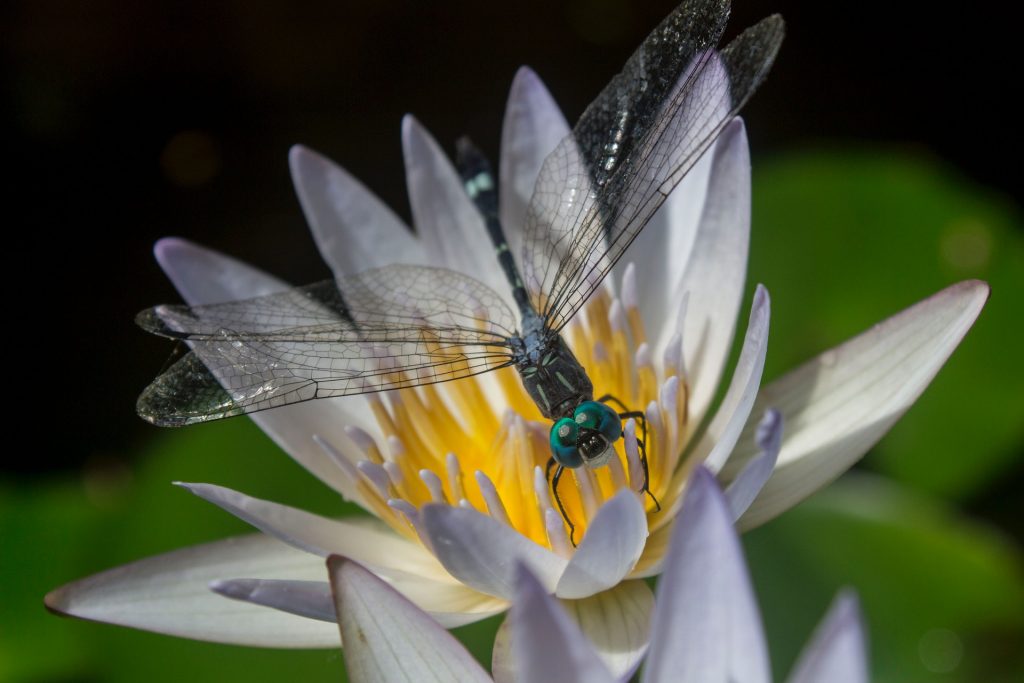
Adult dragonfly on Water Lily.
Building your own pond that is deep enough to not freeze, or including a pump with flowing water can ensure that dragonfly larvae are able to survive the winter. This is very important because the majority of a dragonflies life is in this stage. Professional consultation is recommended to ensure that the location and floodplain would allow for this instalment to go well. A plant that attracts dragonflies that would go well with a pond would be the Water Lily. Females love to lay their eggs on these beauties. Planting more areas for females to lay eggs allows for expansion of habitat and population. Wetlands have this naturally and bring life to the pond. Arrowhead is another shoreline plant that would be a great way to attract dragonflies. Dense arrays of arrowheads allow for there to be shelter for dragonflies to live. This is great for the adult dragonfly since the tall stems assist with hunting insects.
Overall, conserving and protecting wetlands will allow for dragonflies to thrive and continue developing their evolutionary magic for centuries to come. Globally there are over five thousand species of dragonflies and 49 of these species are located in Alberta. So next time you see a dragonfly, thank it for protecting you from that swarm of mosquitoes!
References & Useful Resources
https://wetlandsalberta.ca/wetlands/index.html
https://www.gardeningknowhow.com/garden-how-to/beneficial/attracting-dragonflies.htm
https://www.cbc.ca/news/canada/calgary/dragonflies-damselflies-brian-keating-homestretch-1.6160021
https://www.bbc.com/news/science-environment-58462181
https://www.bbc.com/news/science-environment-59585677
https://workbasedlearning.pnnl.gov/pals/resource/cards/dragonflies.stm
https://scienceline.org/2020/08/dragonflies/
https://www.smithsonianmag.com/science-nature/14-fun-facts-about-dragonflies-96882693/
https://www.almanac.com/content/dragonflies-facts-symbolic-meaning-and-habitat#


